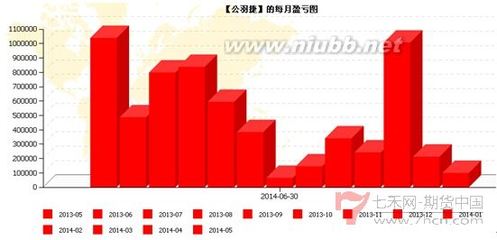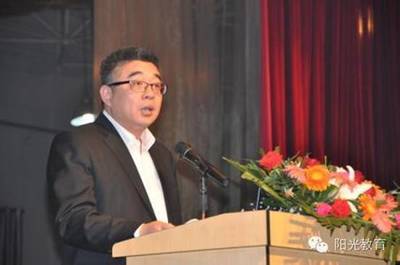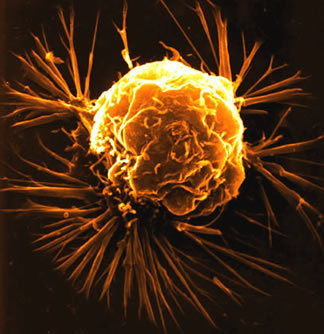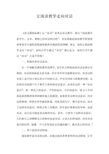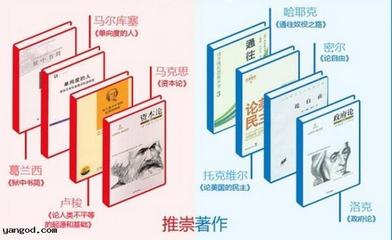最好情况下,转基因作物在产量方面并不比它们的非转基因对应方表现更好,8200个大学为基础的不同品种大豆试验进行的检查发现抗草甘膦大豆产量一贯比非转基因大豆产量较低。产量下降原因的一半来自于转基因转换程序对作物的扰乱影响。2010年6月,美国西佛吉尼亚州对孟山都声称更高产量作假广告开展法律调查。
http://blog.sina.com.cn/s/blog_4bb17e9d0100mfz0.html
《转基因大豆:可持续?负责任?》研究报告:
转基因作物的产量高不准确!
“GM Soy: Sustainable?Responsible?” Report:
The claim that GM crops give higher yields is notaccurate!
Monday, 13 September 2010 19:01
《欧洲转基因观察》网站 2010年9月13日发布
Pdf文件下载链接:http://www.gmwatch.org/files/GMsoy_SustainableResponsible_Sept2010_Summary.pdf
陈一文译(cheniwan@mx.cei.gov.cn)
***
陈一文顾问按:
《科技日报》2010年02月24日《违反自然规律?方舟子:食用转基因农作物风险被高估》对方舟子的观点进行报道。其中对于“为什么许多国家,特别是部分欧洲国家至今反对转基因农作物?”的解释如下:
http://news.sciencenet.cn/htmlnews/2010/2/228489.shtm?id=228489
“除了政治、文化、经济等原因外,欧洲部分国家对引进转基因农作物犹豫不决的重要原因是这些国家的粮食自给有余,不急于通过转基因技术提高粮食产量。”
“如果现在停止前进,中国将失去争夺转基因技术领先者的机会,”方舟子说。
在方舟子看来,发展转基因农作物的主要原因与首位目的显然是“提高粮食产量”。这种说法与黄大昉(中国农业科学院生物技术所研究员)2010年06月25日向十一届全国人大常委会专题讲座第十六讲《农业转基因技术和安全管理》讲稿的宣传一致:
“转基因技术是保障粮食安全与农业可持续发展的重要措施……众所周知,我国农业生产也面临人口增加、资源短缺、环境恶化、气候异常、市场竞争等越来越大的压力,粮食中长期供求形势依然非常严峻。多年来我国粮食增产主要依靠单产的提高,……但要想进一步提高则面临越来越大的困难,必须突破现有技术的瓶颈。因此,我国要实现2020年增产粮食1000亿斤的目标,保障14.5亿人口的粮食安全;……这些目标的实现仍然离不开常规技术,但更需发展转基因技术,将转基因技术和常规技术紧密结合,尤其要加快高产、优质、抗逆、抗病虫、多功能、高附加值等作物新品种的培育。”
方舟子与黄大昉的宣传提出了一个最为简单但是至关重要的问题:“转基因农作物产量高”是真实情况,还是虚假广告弥天大谎?
本节揭示的大量事实对这个问题给出了清楚无误的回答!
***
AGRONOMIC AND ENVIRONMENTAL IMPACTS OF GM RRSOY
抗草甘膦除草剂大豆的园艺学与环境影响
Many of the promised benefits to farmers of GMcrops, including GM RR soy, have not materialized. On the otherhand, unexpected problems have arisen.
包括抗草甘膦除草剂大豆在内的关于转基因作物对农民有益的许多允诺,并没有实现。另外以方面,出现了许多未预料的问题。
==Yield==
==产量==
The claim that GM crops give higher yields isoften uncritically repeated in the media. But this claim is notaccurate.
媒体往往不加鉴别的重复声称转基因作物提供更高的产量的说法。但是这种说法并不准确。
At best, GM crops have performed no better thantheir non-GM counterparts, with GM RR soy giving consistently loweryields. A review of over 8,200 university-based soybean varietaltrials found a yield drag of between 6 and 10 per cent for GM RRsoy compared with non-GM soy. [145] Controlled comparative field trials of GM andnon-GM soy suggest that half the drop in yield is due to thedisruptive effect of the GM transformation process.[146]
在最好的情况下,转基因作物在产量方面并不比它们的非转基因对应方表现的更好,其中抗草甘膦除草剂大豆的产量一贯比非转基因大豆的产量较低。对于8200个大学为基础的不同品种大豆试验进行的检查发现,抗草甘膦除草剂大豆产量比对应的非转基因大豆低6%至 10%。[145]转基因大豆与非转基因大豆对照比较田地试验表明这种产量下降的一半来自于转基因转换程序的扰乱性影响。[146]
Data from Argentina show that GM RR soy yields arethe same as, or lower than, non-GM soybean yields.[147] In 2009, Brazilian farmer organization FARSULpublished the results of trials on 61 varieties of soybean (40 GM and 21 non-GM),showing that the average yield of non-GM soybeans was 9 percent higher than GM, at a cost equivalent production.[148]
阿根廷的数据显示那里的抗草甘膦除草剂大豆产量与对应的非转基因大豆产量或者相同或者低。[147] 2009年,巴西的农民组织FARSUL公布了61个品种大豆的试验结果(40种转基因大豆与21种非转基因品种),表明同样成本生产条件下非转基因大豆的平均产量比转基因高9%。[148]
Claims of higher yields from Monsanto’s newgeneration of RR soybeans, RR 2 Yield, have not been borne out. Astudy carried out in five US states involving 20 farm managers whoplanted RR 2 soybeans in 2009 concluded that the new varieties“didn’t meet their [yield] expectations”. [149]In June 2010 the state of West Virginia launchedan investigation of Monsanto for false advertising claims that RR 2soybeans gave higher yields. [150]
声称孟山都公司新一代RR 2 Yield抗草甘膦大豆具有更高产量的说法,并没有实现。在美国五个州进行了涉及2009年种植了RR 2 Yield转基因大豆的20位农场经理的一项研究,他们的结论,新的品种“未能够满足他们(对产量)的期望”。[149] 2010年6月,美国西佛吉尼亚州对孟山都公司声称新一代RR 2 Yield抗草甘膦大豆具有更高产量的作假广告内容开展法律调查。[150]
A possible explanation for the lower yields of GMRR soy is that the transgenic modification alters the plant’sphysiology so that it takes up nutrients less effectively. Onestudy found that GM RR soy takes up the important plant nutrientmanganese less efficiently than non-GM soy. [151] Another possibility is that the glyphosate usedwith GM RR soy is responsible for the yield decrease, as it reducesnutrient uptake in plants and makes them more susceptible todisease. A third possibility is that the new added biologicalfunction that enables the GM soy to resist glyphosate involvesadditional energy consumption by the plant. As a result, lessenergy could be left over for grain formation and maturity. Thegenetic engineering process permitted a new function, but nevermade available additional energy.
对抗草甘膦除草剂大豆较低产量的可能的解释是,转基因改造改变了作物的生理学使它低效吸收养分。一项研究发现,抗草甘膦除草剂大豆比非转基因大豆较低效吸收锰这个重要作物养分。[151] 另外一种可能性是,与抗草甘膦除草剂大豆一起使用的草甘膦除草剂对产量降低有责任,因为它减少作物的养分吸收从而使它们对病害更为脆弱。第三项可能性是,增加了的允许转基因大豆抵抗草甘膦的额外生物功能对作物涉及消耗额外的能量。作为结果,剩余较少的能量用于谷粒与成熟。基因工程过程允许了新的功能,但是没有创造额外的能量。
A US Department of Agriculture report confirms thepoor yield performance of GM crops, saying, “GE crops available forcommercial use do not increase the yield potential of a variety. Infact, yield may even decrease.... Perhaps the biggest issue raisedby these results is how to explain the rapid adoption of GE cropswhen farm financial impacts appear to be mixed or evennegative.” [152]
美国农业部的一个报告确认了转基因大豆作物低劣的产量表现,该报告说,“适合于商业使用的转基因作物并不增加一个品种的产量潜力,产量甚至可能降低……也许这些结果提出的最大问题是如何解释转基因作物快速的应用,而农场财务影响显示混合或甚至负面。”[152]
The failure of GM to increase yield potential isemphasised in 2008 by the United Nations IAASTD report on thefuture of farming. [153] This report, authored by 400 internationalscientists and backed by 58 governments, says that yields of GMcrops are “highly variable” and in some cases, “yields declined”.The report notes, “Assessment of the technology lags behind itsdevelopment, information is anecdotal and contradictory, anduncertainty about possible benefits and damage isunavoidable.”
2008年,联合国的IAASTD关于未来农业的报告强调了转基因未能够实现增加产量潜力的失败。[153]获得58个国家政府支持的400位国际科学家为作者的该报告说,转基因作物的产量“高度不同”而且在某些情况下“产量下降”。报告表明,“对该项技术的评估落在它的发展的后面,信息趣闻多而相互矛盾,对可能的益处没有把握以及损害是不可避免的。”
The definitive study to date on GM crops and yieldis “Failure to yield: Evaluating the performance of geneticallyengineered crops”, [154] by former US Environmental Protection Agency (EPA)scientist, Dr Doug Gurian-Sherman. It uses data frompublished,peer-reviewed studies with well-designed experimentalcontrols. The studydistinguishes between intrinsic yield (also called potentialyield), defined as the highest yield which can be achieved underideal conditions, and operational yield, the final yield achievedunder normal field conditions when crop losses due to pests,drought, or other environmental stresses are factoredin.
对转基因作物与产量到目前为止的决定性研究是美国环境保护局(EPA)前任科学家Doug Gurian-Sherman博士的“未能实现的产量:评价基因工程作物的表现”。[154] 它使用的数据来自公开发表的经同行审查的良好涉及的试验对照。该项研究识别了本质产量(也称为潜在产量),界定为在理想条件下能够实现的最高产量;以及操作产量,即正常农田条件下虫害、干旱或其他环境影响因素涉及在内的最终产量。
The study also separates out effects on yieldcaused by conventional breeding methods and those caused by GMtraits. It has become common for biotech companies to useconventional breeding and marker assisted breeding to producehigher-yielding crops and to engineer in their own patented genesfor herbicide tolerance or insect resistance. In such cases, higheryields are not due to genetic engineering but to conventionalbreeding. “Failure to yield” teases out these distinctions andanalyzes the contributions made by genetic engineering andconventional breeding to increasing yield.
该项研究同时分开了传统繁育方法对产量的影响与转基因特征对产量造成的影响。生物技术公司普遍利用常规育种和分子标记辅助育种来实现更高的产量作物,并且将这些包括在自己的耐除草剂或抗虫基因专利中。在这种情况下,更高的产量不是由于基因工程而是由于传统繁殖。“未能实现的产量”梳理出这些区别并且分析了基因工程的贡献与传统繁殖对增加产量的贡献。
The study concludes that GM herbicide-resistantsoybeans have not increased yields. It further concludes that GMcrops in general “have made no inroads so far into raising theintrinsic or potential yield of any crop. By contrast, traditionalbreeding has been spectacularly successful in this regard; it canbe solely credited with the intrinsic yield increases in the UnitedStates and other parts of the world that characterized theagriculture of the twentieth century.”
该项研究结论,转基因抗除草剂大豆并没有增加产量。它进一步结论,转基因作物一般来说“没有开辟任何一种作物提高本质或者潜在产量的进展。与此相反,传统繁殖在这一方面尤其有效;成为20世纪农业特征的美国以及世界其他地方本质产量的增加可以独一无二地归功于它(传统繁殖)。
The author comments, “If we are going to makeheadway in combating hunger due to overpopulation and climatechange, we will need to increase crop yields. Traditional breedingoutperforms genetic engineering hands down.” [155]
作者的看法,“如果我们要战胜人口过多与气候变化导致的饥饿,我们需要增加作物产量。传统繁殖胜过基因工程看似容易的结果。”[155]
References
参考文献:
[145] Benbrook C. 1999. Evidence of the magnitude andconsequences of the Roundup Ready soybean yield drag fromuniversity-based varietal trials in 1998. Ag BioTech InfoNetTechnical Paper No 1, Jul 13.
[145] Benbrook C. 1999。1988年进行的以大学为基础不同品种抗草甘膦除草剂大豆试验产量低的证据与后果。农业生物技术网技术论文第1号,7月13日。
http://www.mindfully.org/GE/RRS-Yield-Drag.htm
[146] Elmore R.W., Roeth, F.W., Nelson, L.A., Shapiro,C.A., Klein, R.N., Knezevic,S.Z., Martin, A. 2001. Glyphosate-resistant soyabeancultivar yields compared with sister lines. Agronomy Journal 93,408–412. 2001。
[146] Elmore R.W., Roeth, F.W., Nelson, L.A., Shapiro,C.A., Klein, R.N., Knezevic,S.Z., Martin, A.2001.抗草甘膦除草剂大豆栽培品种与姊妹系比较的产量。园艺学杂志,93,408-412.
[147] Qaim, M. and G. Traxler. 2005. Roundup Readysoybeans in Argentina: farm level and aggregate welfareeffects. Agricultural Economics 32, 73–86.
[147] Qaim, M. and G. Traxler. 2005。在阿根廷的抗草甘膦除草剂大豆:农场层次与聚集福利影响。农业经济学,32,73-86。
[148] FARSUL. 2009. Divulgados resultados do Programa deAvaliação de Cultivares de Soja (Published results of the Program Evaluation ofsoybean cultivars). 17/06/2009.
[148] FARSUL. 2009。对大豆栽培品种计划评价的公布结果,17/06/2009。
http://www.farsul.org.br/pg_informes.php?id_noticia=870
[149] Kaskey, J. 2009. Monsanto facing “distrust” as itseeks to stop DuPont. Bloomberg, November 11.
[149] Kaskey, J. 2009。孟山都公司面临“不信任”随着它寻求终止杜邦。Bloomberg,11月11日。
[150] Gillam, C. 2010. Virginia probing Monsanto soybeanseed pricing. WestVirginia investigatingMonsanto for consumer fraud. Reuters, June25.
[150] Gillam, C. 2010。维吉尼亚深入调查孟山都公司大豆种子的定价制度。西维吉尼亚州因欺诈消费者调查孟山都公司。路透社,6月25日。
http://www.reuters.com/article/idUSN2515475920100625
[151] Gordon, B., 2006. Manganese nutrition ofglyphosate resistant and conventional soybeans. Better Crops 91,April.
[151] Gordon, B., 2006。抗草甘膦大豆与传统大豆的锰养分。优良作物,91,4月。
http://www.ipni.net/ppiweb/bcrops.nsf/$webindex/70ABDB50A75463F085257394001B157F/$file/07-4p12.pdf
[152] US Department of Agriculture. 2002. The adoptionof bioengineered crops.
[152] 美国农业部,2002。生物工程作物的应用。
http://www.ers.usda.gov/publications/aer810/aer810.pdf
[153] Beintema, N. et al. 2008. International Assessmentof Agricultural Knowledge, Science and Technology for Development:Global Summary for Decision Makers (IAASTD).
[153] Beintema, N. et al. 2008。对农业知识、科学与技术发展的国际评估:供决策者的全球概述(IAASTD)。
http://www.agassessment.org/index.cfm?Page=IAASTDReports&ItemID=2713
[154] Gurian-Sherman, D. 2009. Failure to yield:Evaluating the performance of genetically engineered crops. Unionof Concerned Scientists.
[154] Gurian-Sherman, D. 2009。产量的失败:评价基因工程作物的表现,担心的科学家联盟。
http://www.ucsusa.org/assets/documents/food_and_agriculture/failure-to-yield.pdf
[155] Gurian-Sherman, D. 2009. Press release, Union ofConcerned Scientists, April 14.
[155] Gurian-Sherman, D. 2009。未能实现的产量:评价基因工程作物的表现,有所担心的科学家联盟。
http://www.ucsusa.org/news/press_release/ge-fails-to-increase-yields-0219.html
 爱华网
爱华网